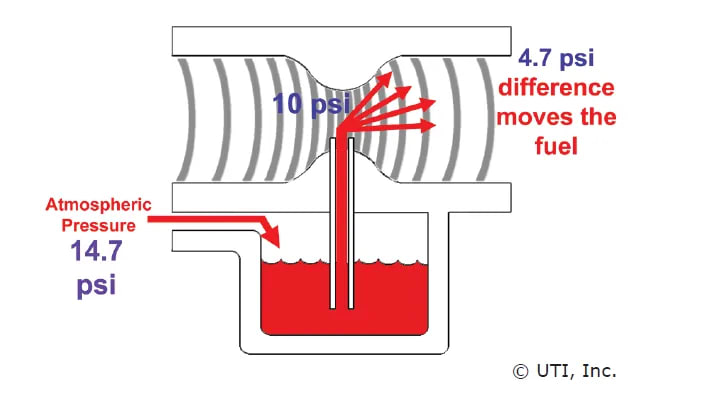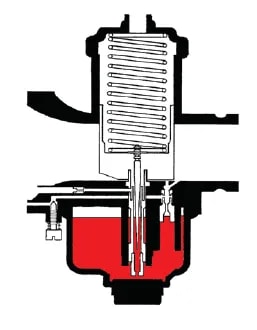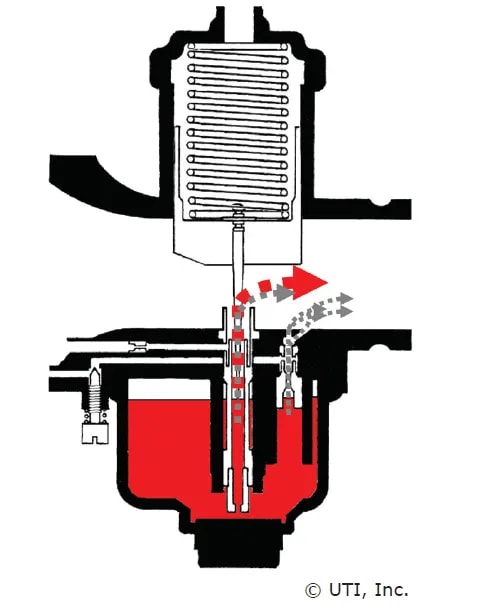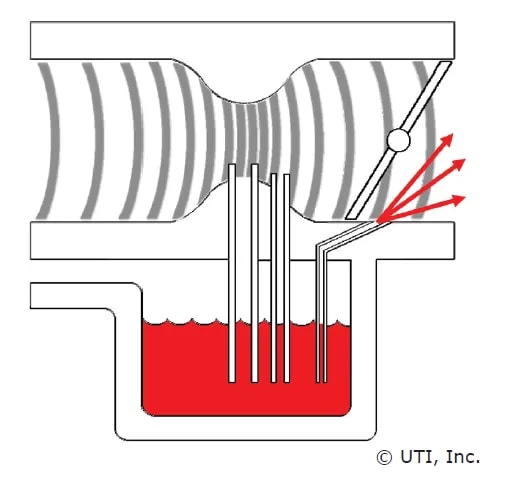UTI Grad Creates Business Centered Around Motorcycle Culture
UTI Grad Chris Drew went from student to entrepreneur. Read more about how he and his wife started their business, Spoke & Dagger Co.
Despite new motorcycles being almost exclusively fuel-injected, countless carbureted motorcycles (as well as dirt bikes, ATVs and more) are still in use today. For many riders and new motorcycle technicians, carburetors are a mystery—however, once we take a deeper look, we learn that they are incredibly simple devices.
Keep reading to learn about the often misunderstood device located between the air box and the cylinder head.
Key points:
To gain a better understanding, let’s continue to discuss what exactly a motorcycle carburetor is. In the simplest of terms, a motorcycle “carb,” or series of multiple carburetors, has the job of creating a combustible mix of gasoline and air that will power the engine and create the driving force to propel the vehicle forward.
Carburetors have been updated, modernized and improved over the years. However, the basic premise of mixing fuel and air has not changed.
A motorcycle carburetor is responsible for mixing air and fuel in the correct proportions to enable efficient combustion within the engine. It regulates the air-fuel ratio by drawing air through an intake and mixing it with fuel from the tank before delivering this mixture to the engine's cylinders.
This process ensures optimal engine performance, as the right balance of air and fuel is necessary for smooth operation and power output. Proper maintenance and carburetor tuning prevent issues such as poor fuel efficiency, engine stalling or rough idling.
Let’s cover the basics:
Now that we’ve covered the basics, let’s take a deeper look into how a motorcycle carburetor works.
Surprisingly, twisting the throttle on a motorcycle handlebar does not directly control how much fuel enters the engine. The throttle controls how much air is allowed to flow through the carburetor, and the flow of air is what controls how much fuel is also fed into the engine.
The Venturi principle/effect states that when air flows through a restriction of a tube (narrowing), the air speed increases and air pressure decreases. This drop in air pressure draws fuel up and out of the carburetor bowl through a series of precisely machined jets and passages and into the cylinder head.

Image: Venturi Principle/Effect
As a piston travels down the cylinder bore of an internal combustion engine, it creates negative air pressure. This negative air pressure, along with an open intake valve, draws air through the carburetor and into the combustion chamber.
As the rider opens the throttle, a butterfly valve or slide allows more air to rush in, and that traveling air picks up a specific amount of fuel from the carburetor bowl. A series of passages, vents and jets regulate the volume of fuel, depending on the engine's needs.
Carburetors fall into two categories: mechanical slide or constant velocity (CV). In a mechanical slide carburetor, the rider’s throttle input directly raises or lowers the carburetor slide, which regulates how much air flows through the bore and into the engine.
Mechanical slide carbs are popular in racing, off road and other performance applications. For maximum performance, accelerator pumps are often built into mechanical slide carburetors to deliver the fuel needed at any given time.

Image: Mechanical Slides
Constant velocity carburetors allow for better performance at various altitudes and offer smoother throttle response across all ranges of throttle. CV carbs do not have a physical connection between the slide and the handlebar mounted throttle. Instead, the throttle opens a butterfly style valve in the throat of the carburetor, and vacuum pressure will lift the slide as much as needed.

Image: Constant Velocity Carburetor
Terms like “lean” or “rich” and sayings like “Lean is mean, and fat is flat,” are commonly heard when discussing carburetor-controlled vehicles. What does it all mean? Is the often sought after 14.7:1 stoichiometric air/fuel ratio appropriate in all situations?
When a carburetor mixes air and fuel, the ratio of one to the other has an impact on engine longevity, fuel economy, emissions and of course, performance. Even cylinder head temperature can fluctuate based on how rich or lean the air/fuel ratio is.
Adjustments to jet sizes, slide needle taper and diaphragm spring tension are made to achieve desired performance outcomes. Analyzing the exhaust gas composition is a common way to help with tuning and dialing in optimal air/fuel mixture ratios. So, while carburetors are less sophisticated than electronic fuel injection, they can still be intimidating to new technicians.
There are three main circuits of a carburetor: idle, midrange and main. Each circuit is responsible for regulating the air-fuel ratio for different rider demands. If 14.7 parts air to 1 part fuel (stoichiometric) is the idle ratio, these three circuits operate to achieve that goal at all times.

Image: Main Circuit
The idle circuit is active when the throttle is closed, and the motorcycle is idling. Midrange is active under partial throttle, when accelerating from a stop or upon gradual acceleration. The main circuit is active when the throttle is between 75% open to wide open throttle (WOT).

Image: Idle Circuit
4-stroke small engine carburetors work using the same principles as a motorcycle carburetor. Typically, small engine carbs will be the simplest in design, falling into the mechanical slide category rather than the more complicated CV design.
Due to the compact size of 2-stroke engines, they are often used on lawn equipment such as blowers, weed trimmers, chainsaws and more. These engines must work without the benefit of being gravity-fed, as the nature of their use puts the engine in various positions, including upside down.
2-stroke small engine carburetors have the same job of mixing air and fuel at proper ratios as their 4-stroke carburetor counterparts. Their operation, however, is slightly different.
Using a primer bulb and diaphragms, 2-stroke carburetors can create a pressurized, continuous loop of fuel from the fuel tank to the engine with any unused excess fuel fed back into the tank. There will not be a bowl to temporarily store fuel, rather, mechanically priming the bulb will pressurize the system, readying the fuel system to supply the engine.
So, how do motorcycle technicians benefit from carburetor knowledge?
The main benefit comes from the millions of vehicles already in use that run carbs. Dealerships and independent shops service a wide variety of vehicles, and technicians familiar with carburetors will still see them on their service lifts for years to come. Technicians who can service a wide variety of equipment, including carbureted vehicles, typically stay busier and often remain in demand.
You can gain this knowledge by enrolling in a motorcycle technician training program like the one offered at UTI!1 You can get hands-on training in labs designed to mirror the field!18Request more information and an Admission Representative will reach out to talk about how you can train to turn your passion into a profession!
Universal Technical Institute of Illinois, Inc. is approved by the Division of Private Business and Vocational Schools of the Illinois Board of Higher Education.